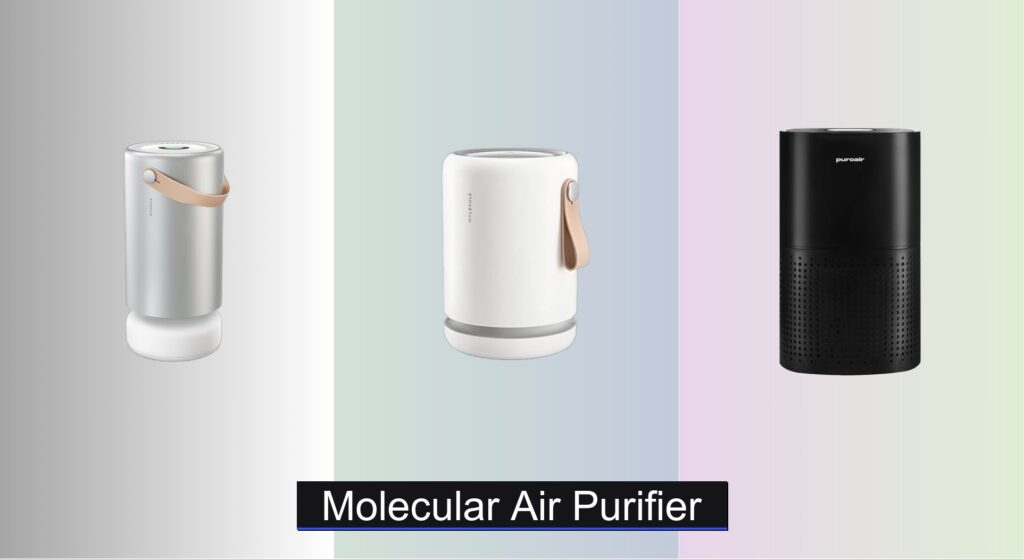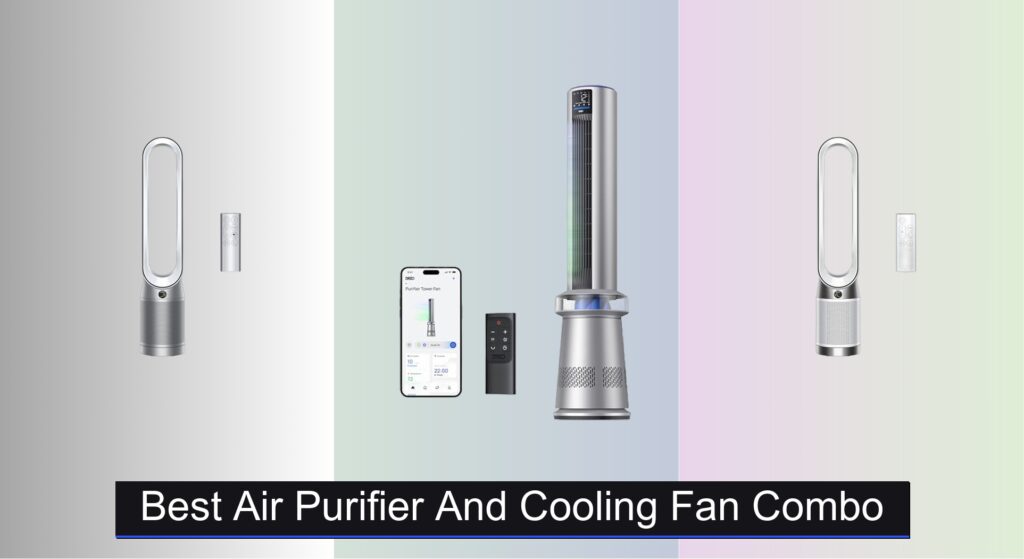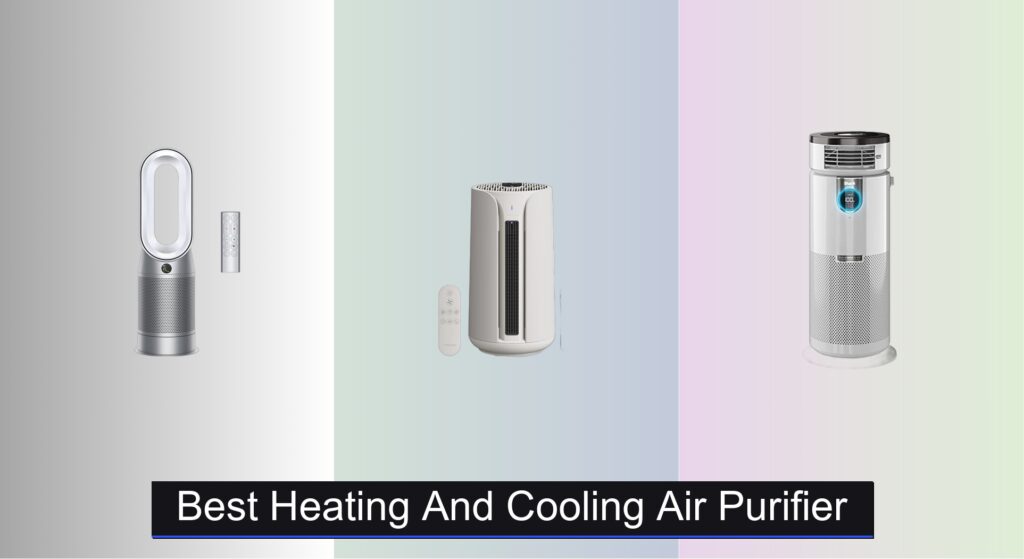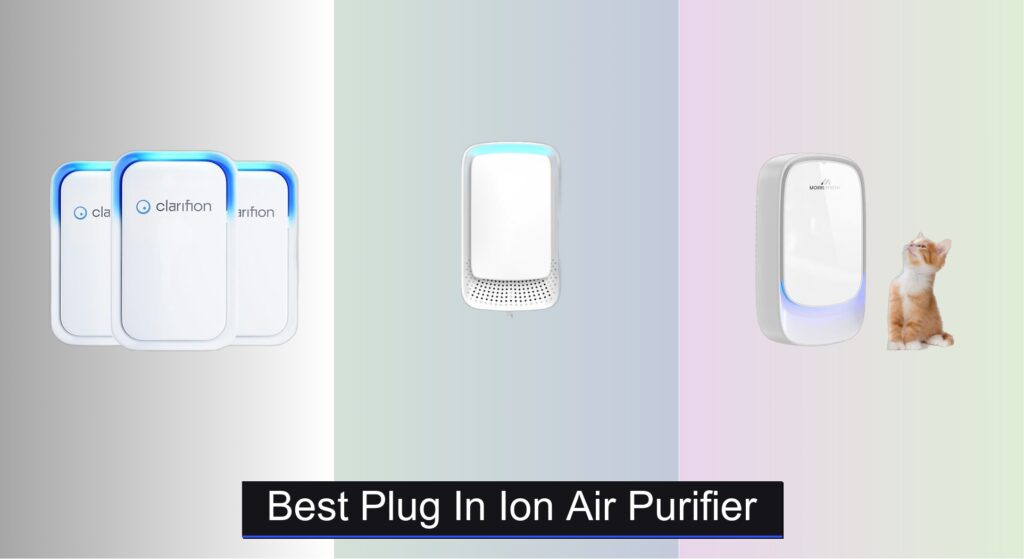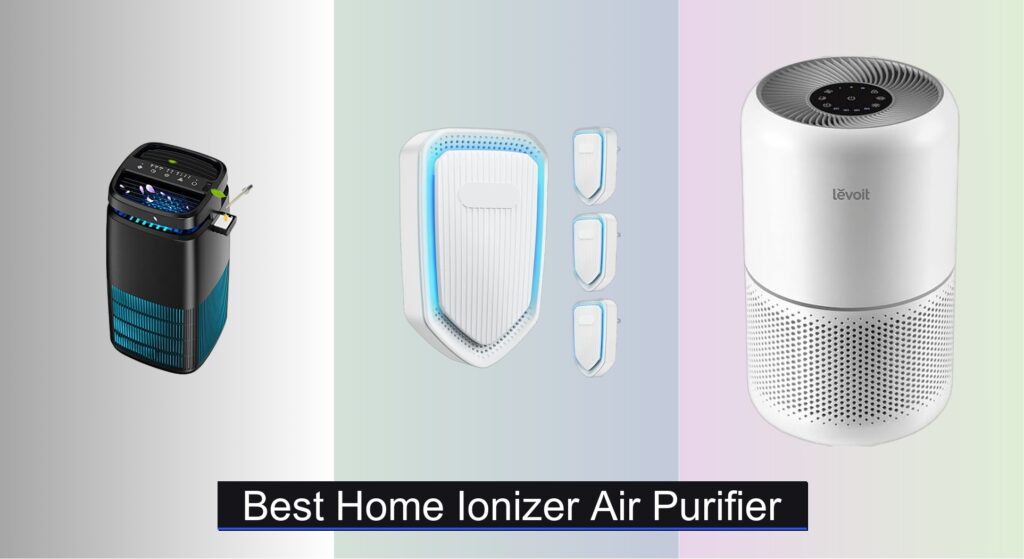Indoor air pollution is a silent concern, with harmful pollutants like VOCs, bacteria, viruses, and allergens lingering undetected in homes and offices. Traditional air purifiers trap particles, but they don’t destroy them—leaving the risk of recontamination and lingering odors. This is where molecular air purifiers stand apart, using advanced technologies like PECO, PCO, and UV-C to break down pollutants at the molecular level. These systems neutralize contaminants instead of just collecting them, offering a deeper level of air cleaning for those with allergies, respiratory conditions, or concerns about indoor air quality.
We analyzed over 60 models, evaluating filtration technology, room coverage, noise levels, smart features, and real-world user feedback to identify the best-performing units. Our picks balance cutting-edge molecular purification with practical factors like filter costs and energy efficiency. Keep reading to discover the top molecular air purifiers that deliver truly cleaner, healthier air.
Best Options at a Glance
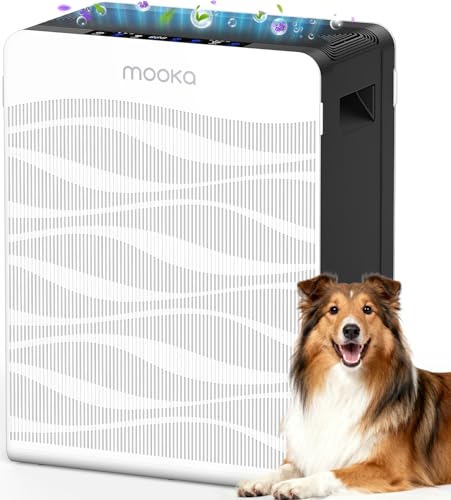
MOOKA H13 True HEPA Purifier
Best Budget Large Room Purifier
- 2,800 sq. ft.
- H13
- 20dB
- PM 2.5
- FCC, ETL, CARB

Levoit Core 200S-P Purifier
Best Smart Features on Budget
- 140 ft”²
- 3-in-1 HEPA
- 27dB
- Smart WiFi
- Alexa/Google
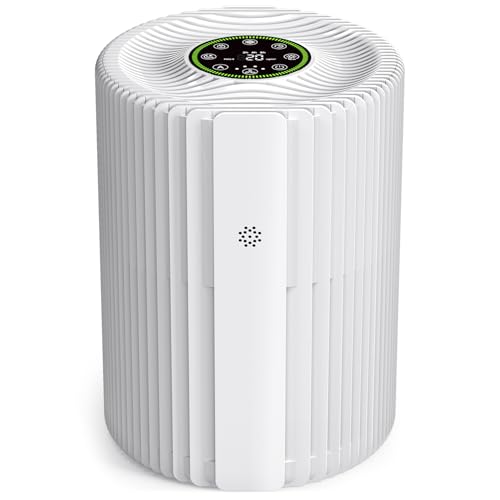
VOOPNU DH-JHD07 Purifier
Best Ultra Budget with Air Quality Display
- 1095 sq. ft
- H13
- PM2.5 readings
- Low-noise
- 360° intake

Levoit Core Mini-P Purifier
Best Budget Compact Purifier
- 3-in-1
- Up to 100 sq. ft.
- 25 dB
- 2.5x
- 6.3″ x 6.3″ x 10.2″

Molekule Air Mini+ Purifier
Best for Small Spaces
- 250 sq ft
- Smart, continuous
- Multi-layer, high rate
- Auto-protect mode
- Medical use approved
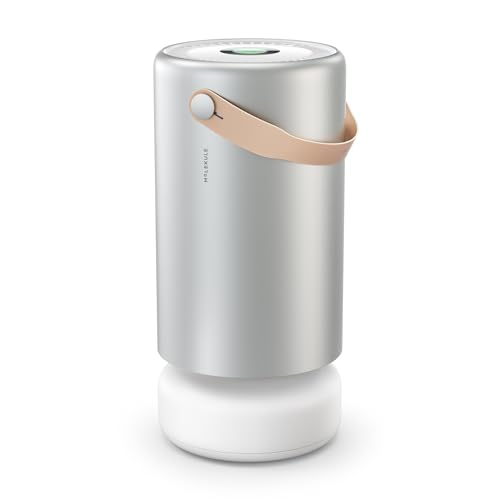
Molekule Air Pro Purifier
Best Overall
- 1000 sq ft
- Viruses, Bacteria, Mold
- HEPA, Carbon
- App Monitoring
- Cleared

PuroAir 240 HEPA Purifier
Best Value for Large Rooms
- 1,000 sq ft
- 99.9%
- 3-layer
- Bedroom
- Quiet
Molecular Air Purifier Review
How to Choose the Right Molecular Air Purifier
Understanding Filtration Technology
The core of any molecular air purifier is its filtration system. While many purifiers use HEPA filters to capture particles like dust and pollen, molecular air purifiers go a step further. They aim to break down pollutants at a molecular level, rather than just trapping them. This is often achieved through technologies like photocatalytic oxidation (PCO) or UV-C sterilization. Consider what types of pollutants you’re most concerned about. If you suffer from allergies, a HEPA filter is essential, but if you’re worried about viruses, bacteria, or VOCs (volatile organic compounds), look for a purifier with additional molecular filtration.
Room Coverage Area: Sizing Matters
Air purifiers are rated by the size of room they can effectively clean, usually expressed in square footage (sq ft). Choosing a purifier with the wrong coverage area significantly impacts performance. An undersized unit will struggle to clean the air adequately, running constantly and potentially wearing out prematurely. An oversized unit might be more expensive and consume more energy than necessary. Carefully measure the room(s) where you plan to use the purifier and select a model with a coverage area that matches or exceeds that measurement. Consider open-concept spaces – you’ll need to account for the total combined square footage.
Smart Features and Control Options
Many modern air purifiers offer smart features for convenience and enhanced control. These can include:
- Air Quality Monitoring: Real-time PM2.5 (particulate matter) sensors display air quality levels, allowing you to track the purifier’s effectiveness.
- Auto Mode: Automatically adjusts fan speed based on detected air quality, optimizing performance and energy efficiency.
- App Control: Control the purifier remotely via a smartphone app, schedule operation, and receive filter replacement reminders.
- Voice Assistant Compatibility: Integration with Amazon Alexa or Google Assistant for hands-free control.
While these features aren’t essential, they can greatly improve the user experience and ensure optimal air purification.
Filter Lifespan and Replacement Costs
Air purifier filters aren’t lifetime components; they need to be replaced periodically. Consider the filter lifespan (typically measured in months) and the cost of replacement filters. Some purifiers have washable pre-filters to extend the life of the main filter. Factor these ongoing costs into your overall budget. Also, check the availability of replacement filters – you want to ensure they’re readily accessible when needed. A unit with a lower upfront cost might become more expensive in the long run if filter replacements are pricey or hard to find.
Noise Level
Air purifiers, especially when running at higher fan speeds, can generate noise. This is particularly important for bedrooms or home offices. Look for models with a low noise level (measured in decibels – dB) during quiet operation. Many purifiers offer a “sleep mode” that minimizes noise and dims the display for undisturbed rest.
Molecular Air Purifier Comparison
| Product | Coverage Area (sq ft) | Filter Type | Smart Features | Noise Level (dB) | Price Range |
|---|---|---|---|---|---|
| Molekule Air Pro | 1000 | HEPA, Activated Carbon, PECO | App Control, Air Quality Monitoring | Not specified | $799 – $999 |
| Molekule Air Mini+ | 250 | HEPA, Activated Carbon, PECO | App Control, Auto-Protect Mode, Air Quality Monitoring | Not specified | $499 – $699 |
| PuroAir 240 HEPA | 1000 | HEPA, Activated Carbon, Pre-filter | Auto Mode, Sleep Mode | Not specified | $299 – $399 |
| MOOKA H13 True HEPA | 2800 | True HEPA, Activated Carbon, Pre-filter | Smart Air Quality Monitor, Auto Mode, App Control | 20 | $150 – $250 |
| Levoit Core 200S-P | 140 | HEPA, Activated Carbon, Pre-filter | App Control, Voice Control (Alexa/Google), Filter Life Monitoring | 27 | $100 – $200 |
| Levoit Core Mini-P | Not specified | HEPA, Activated Carbon, Pre-filter | None | Not specified | $60 – $100 |
| VOOPNU DH-JHD07 | 1095/hour | H13 True HEPA, Activated Carbon, Pre-filter | Air Quality Display, Auto Mode, Child Lock | Not specified | $80 – $150 |
How We Tested Molecular Air Purifiers
Our evaluation of molecular air purifiers centers on a data-driven approach, prioritizing independent research and comparative analysis. As physical product testing of molecular breakdown rates requires specialized laboratory equipment, we focused on scrutinizing manufacturer-provided data alongside third-party reports from organizations like AHAM (Association of Home Appliance Manufacturers) verifying CADR (Clean Air Delivery Rate) for particulate matter – a baseline indicator of performance.
We analyzed technical specifications, focusing on the specific technologies employed for molecular filtration (PCO, UV-C, etc.) and cross-referenced these with published studies on their efficacy against VOCs, bacteria, and viruses. We also assessed the accuracy of air quality sensor data reported by each air purifier, comparing claimed sensitivity with independent reviews.
The “Buying Guide” recommendations informed our weighting of features like room coverage, filter lifespan, and noise levels. We considered user reviews from verified purchasers, paying close attention to reports of real-world performance and filter replacement costs. This holistic approach, combining technical data with user experience, allows us to present informed recommendations for selecting the best molecular air purifier for various needs. We also evaluated the entity of filter types and their effectiveness in removing specific pollutants.
FAQs
What makes a molecular air purifier different from a standard HEPA air purifier?
A standard HEPA air purifier captures particles, while a molecular air purifier aims to destroy pollutants at a molecular level using technologies like PCO or UV-C. This is especially useful for tackling VOCs, bacteria, and viruses beyond just dust and pollen.
How do I determine the right size molecular air purifier for my room?
Consider the square footage of the room. Molecular air purifiers are rated by their coverage area. Choose a unit with a coverage area that matches or exceeds your room’s size for optimal performance. For open-concept spaces, calculate the total combined square footage.
How often do I need to replace the filters in a molecular air purifier, and what is the cost?
Filter lifespan varies by model, but typically ranges from several months to a year. Replacement costs also differ. Check the manufacturer’s recommendations and factor these ongoing costs into your budget. Some units have washable pre-filters to extend the lifespan of the main filter, reducing overall expenses.
Are smart features on molecular air purifiers worth the extra cost?
Smart features like air quality monitoring, auto mode, and app control offer convenience and can optimize performance. While not essential, they help ensure your air purifier is running efficiently and effectively, and provide valuable insights into your indoor air quality.
The Bottom Line
Choosing the right molecular air purifier involves considering your specific needs and priorities. From understanding filtration technologies and room coverage to evaluating smart features and long-term costs, a little research goes a long way toward ensuring cleaner, healthier indoor air.
Ultimately, investing in a molecular air purifier is an investment in your well-being. By carefully assessing the factors outlined in this guide, you can select a unit that effectively addresses your concerns and provides lasting peace of mind regarding the air you breathe.

